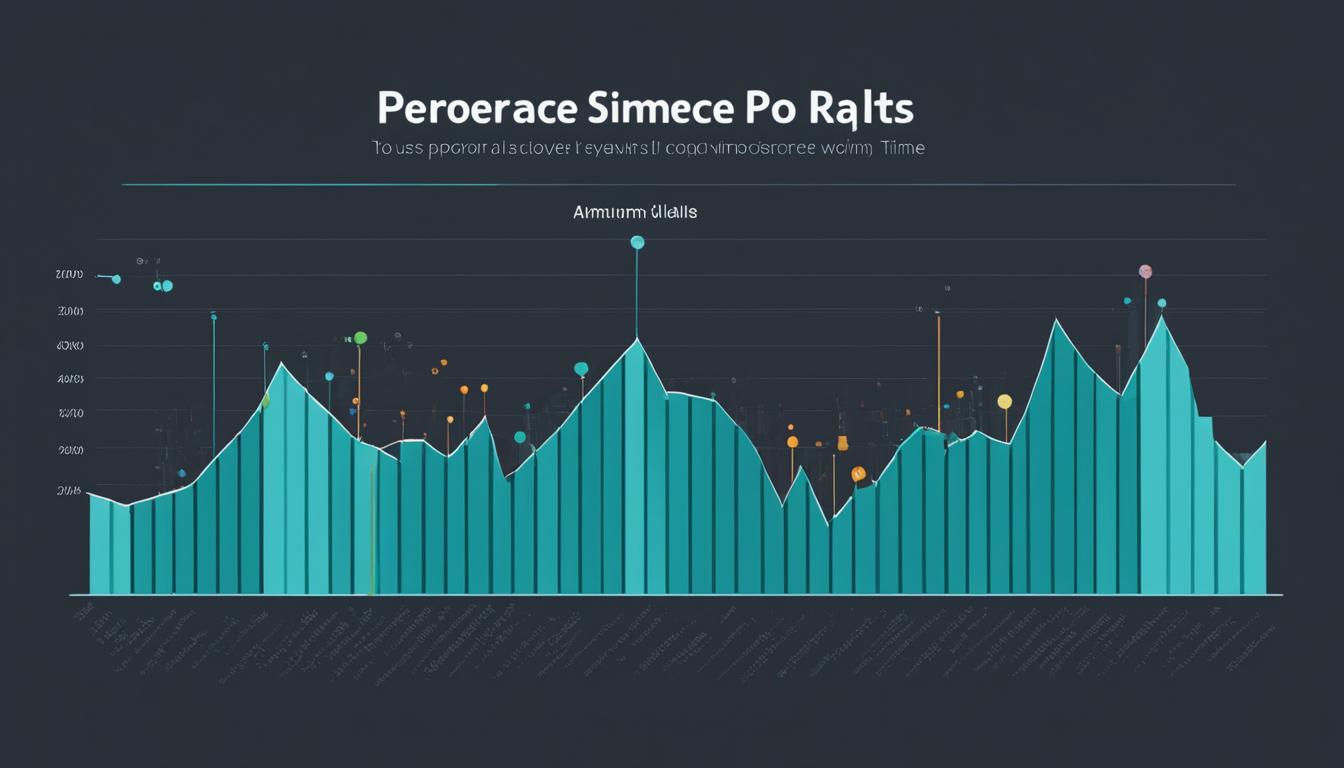So, you believe you have been repeatedly streaming that particular song for weeks, correct? However, determining the exact number of times you have played it on Spotify is not as simple as you may assume.
But fear not, there are some methods to help you estimate and track your play counts. From using the Spotify desktop app to exploring third-party tracking tools, we've got some tricks up our sleeves to help you uncover the mystery of your song streams.
So, how can you finally get the answer you've been searching for?
Key Takeaways
- Spotify does not provide a built-in play count feature, but there are methods to estimate and track play counts.
- The Spotify desktop app allows convenient tracking of play counts by adding songs to a dedicated tracking playlist and using the 'Stats for Nerds' view.
- Third-party tools like Last.fm, Soundiiz, and SpotOnTrack offer more detailed statistics and play count tracking features for Spotify.
- Manual tracking of song streams is another option, but it can be time-consuming. Using the Spotify desktop app or third-party websites/apps can provide more accurate data.
Understanding Spotify Play Count
Understanding Spotify play count allows us to gain insight into our listening habits and the popularity of our favorite songs.
By checking the play count of a song on Spotify, we can see the number of times it has been streamed.
Although Spotify doesn't provide a built-in feature to view play counts, there are methods to estimate and track play counts.
These include using the Spotify desktop app, third-party websites or apps, and manual tracking.
Additionally, external platforms like Last.fm can offer detailed statistics, including play counts, by linking your Spotify account.
If you prefer a more hands-on approach, you can manually track play counts by creating a dedicated playlist and incrementing a numeric value each time you listen to a song from the playlist.
Understanding play counts not only allows us to find our personal favorites but also helps in assessing music trends, evaluating artistic impact, and analyzing our listening habits.
It adds depth to our music experience and provides valuable insights into the songs we love.
Using Spotify Desktop App for Tracking

The Spotify desktop app provides a convenient method for tracking play counts of our favorite songs. By adding a song to a tracking playlist and switching to the 'Stats for Nerds' view, users can easily determine the play counts. The play count information displayed includes the number of plays, last listening session, and playlist additions, offering a comprehensive play count for each track. This feature allows users to analyze their listening habits and track their musical preferences over time. The Spotify desktop app provides an estimate of the number of times a song has been streamed, offering valuable insights into our music consumption patterns.
| Feature | Description |
|---|---|
| Number of Plays | Displays the total number of times a song has been played. |
| Last Listening Session | Shows the date and time of the most recent listening session. |
| Playlist Additions | Indicates the number of times the song has been added to playlists. |
Utilizing the Spotify desktop app not only allows us to track our play counts but also provides a platform for a deeper understanding of our music listening behavior. With the ability to display play count information and track our play history, the desktop application enhances the overall user experience on the Spotify streaming service.
Exploring Third-Party Tracking Tools
Exploring Third-Party Tracking Tools offers alternative methods for users to estimate and track play counts on Spotify, complementing the play count tracking features available within the Spotify desktop app. These tools provide valuable insights into listening habits, including play counts, popular songs, and overall listening history, thus offering a workaround for Spotify's lack of built-in play count tracking.
- Last.fm: Users can create an account on Last.fm and connect their Spotify account to access detailed statistics about their listening history, top tracks, and play counts.
- Soundiiz: This tool not only allows users to transfer playlists between different streaming services but also provides play counts for individual tracks within Spotify playlists.
- SpotOnTrack: Users can track the performance of their playlists and individual tracks, including play counts, search results, and the overall popularity of their playlists.
These third-party tracking tools offer a comprehensive way to delve into play counts and listening habits, filling the gap left by the absence of native play count tracking features within Spotify. Whether it's for personal curiosity or for tracking the popularity of curated playlists, these tools provide an in-depth look into play counts and listening habits on the Spotify platform.
Manual Tracking of Song Streams
To effectively track the number of times a song has been streamed on Spotify, users can employ various methods.
One method is manually tracking song streams. This involves creating a dedicated playlist and noting down the play count for each song. While this method can be time-consuming, it provides accurate data.
Another method is logging in to the Spotify desktop app, adding the song to a tracking playlist, and switching to Stats for Nerds view. This allows users to estimate the play count.
Alternatively, users can utilize third-party websites or apps like Last.fm, Soundiiz, or SpotOnTrack. These platforms allow users to connect their Spotify account and access detailed play count tracking features for more precise statistics.
For those who prefer a more hands-on approach, keeping a manual record of play counts by creating a spreadsheet, note-taking app, or dedicated notebook can be an effective way to track each play and update it regularly for accurate data.
Analyzing Your Listening Patterns
Analyzing our listening patterns can provide valuable insights into our music preferences and habits, influencing our overall music experience. When we analyze our listening patterns on a streaming service like Spotify, we can uncover fascinating details about our musical inclinations.
This analysis can help us in the following ways:
- Explore our favorite tunes: By analyzing the number of times a track has been played, we can identify our favorite tunes, allowing us to delve deeper into the reasons behind our attraction to certain songs.
- Understand play count statistics: Analyzing play count data enables us to comprehend our listening habits, such as which songs we repeatedly listen to and the trends in our music consumption.
- Assess musical diversity: By examining the play counts of different artists or genres, we can gain insights into the diversity of our music preferences and identify areas where we might want to broaden our musical horizons.
Frequently Asked Questions
Can You See How Many Streams a Song Has Had on Spotify?
Yes, we can track stream counts on Spotify using various methods. By analyzing stream data, we gain insights into song popularity, streaming trends, and artist analytics.
Identifying trending tracks and chart rankings enhances our music consumption experience. Understanding stream counts deepens our connection with favorite songs and helps us discover personal favorites.
While Spotify doesn't offer a built-in feature for individual play counts, we can estimate and track streams through the desktop app or third-party websites.
Can I See How Many Hours of Music I've Listened to on Spotify?
Yes, we can track our listening habits and music consumption on Spotify. While Spotify doesn't directly show total listening hours, third-party platforms like Last.fm offer data tracking and personal statistics.
These tools provide insights into listening trends, time spent, and user engagement through audio analytics. By understanding our listening patterns, we can enhance our music experience and gain valuable user insights.
How Do I Find My Spotify Streaming History?
We can find our Spotify streaming history by accessing the 'Play Queue' in the desktop app, which displays recently played songs.
Third-party platforms like Last.fm also offer insights into listening habits, favorite artists, top genres, and music discovery.
Additionally, the 'Library' section provides access to personalized playlists, daily mixes, artist recommendations, and podcast listening.
Evaluating song history helps in understanding music preferences and enjoying high audio quality.
How Do I See My Stats on Spotify?
We can access a wealth of account insights through Spotify's user analytics, shedding light on our listening habits, personal metrics, and music preferences.
By delving into playlist statistics and streaming data, we uncover playback details and listening trends.
This thorough analysis equips us to understand our listening history and make informed choices about our musical experiences.
Conclusion
In conclusion, while Spotify doesn't provide a native play count feature, there are workarounds to track your song streams.
Whether using the desktop app, third-party tools, or manual tracking methods, it's possible to gain insight into your listening habits.
By exploring these options, you can uncover patterns in your music consumption and gain a deeper understanding of your favorite songs.
As the saying goes, 'knowledge is power,' and tracking play counts can empower you to make informed music choices.








